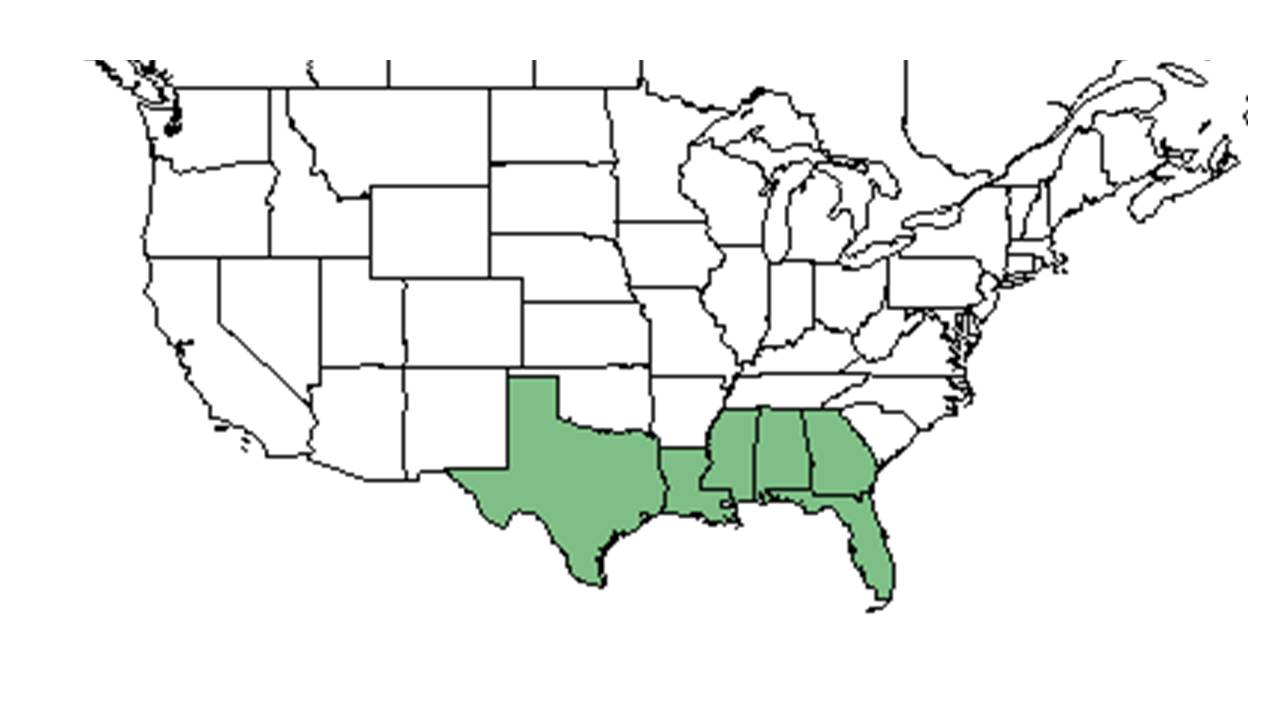Difference between revisions of "Euphorbia discoidalis"
| Line 31: | Line 31: | ||
===Seed bank and germination=== | ===Seed bank and germination=== | ||
===Fire ecology=== <!--Fire tolerance, fire dependence, adaptive fire responses--> | ===Fire ecology=== <!--Fire tolerance, fire dependence, adaptive fire responses--> | ||
| − | + | This species is found in areas that are burned annually such as Longleaf pine-wiregrass savannas and sandhills (FSU Herbarium). It responds positively to fire. Kral (1983) writes "In naturally stocked uplands it increases as a result of woods fires which reduce competing woody vegetation." <ref name="Kral 1983">Kral, R. (1983). Euphorbia discoidalis Chapman. A report on some rare, threatened or endangered forest-related vascular plants of the South. R. Kral. Atlanta, USDA Forest Service, Paper 228: 701-705.</ref> | |
| + | |||
===Pollination=== | ===Pollination=== | ||
===Use by animals=== <!--Herbivory, granivory, insect hosting, etc.--> | ===Use by animals=== <!--Herbivory, granivory, insect hosting, etc.--> | ||
Revision as of 15:26, 13 July 2015
| Euphorbia discoidalis | |
|---|---|

| |
| Scientific classification | |
| Kingdom: | Plantae |
| Division: | Magnoliophyta - Flowering plants |
| Class: | Magnoliopsida – Dicotyledons |
| Order: | Euphorbiales |
| Family: | Euphorbiaceae |
| Genus: | Euphorbia |
| Species: | E. discoidalis |
| Binomial name | |
| Euphorbia discoidalis Chapm. | |

| |
| Natural range of Euphorbia discoidalis from USDA NRCS Plants Database. | |
Contents
Description
Common Name: summer spurge
Distribution
Ecology
Habitat
It likes sandy soils as well as disturbance. Kral (1983) says that it appears to have increased because of disturbance: "Areas in various stages of site preparation have an abundance which continues until the crowns of plantation pine close."[1] It is found in open sandy woodlands; it is most common in longleaf pine-deciduous scrub oak woods and oak-hickory-pine uplands wherever the soils are sandy. It is also found in sandy clearings, and sandhills.[1]. This has been found in habitats such as sandhills, upland pinelands that are annually burned, well drained uplands, and on slopes above a stream (FSU Herbarium). This is also found in human disturbed habitats such as a sandy fallow field (FSU Herbarium). This plant requires areas in habitats that have high light levels (FSU Herbarium) and is associated with areas that have loamy sand (FSU Herbarium). Euphorbia discoidalis is restricted to native groundcover with a statistical affinity in upland pinelands of South Georgia (Ostertag and Robertson 2007).
Phenology
It flowers from late August to frost.[1]
Seed dispersal
Seed bank and germination
Fire ecology
This species is found in areas that are burned annually such as Longleaf pine-wiregrass savannas and sandhills (FSU Herbarium). It responds positively to fire. Kral (1983) writes "In naturally stocked uplands it increases as a result of woods fires which reduce competing woody vegetation." [1]
Pollination
Use by animals
Diseases and parasites
Conservation and Management
Cultivation and restoration
Photo Gallery
References and notes
Ostertag, T.E., and K.M. Robertson. 2007. A comparison of native versus old-field vegetation in upland pinelands managed with frequent fire, South Georgia, USA. Pages 109–120 in R.E. Masters and K.E.M. Galley (eds.). Proceedings of the 23rd Tall Timbers Fire Ecology Conference: Fire in Grassland and Shrubland Ecosystems.